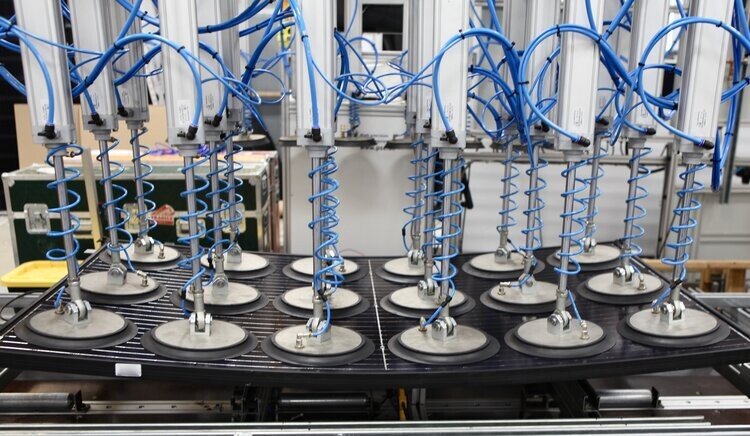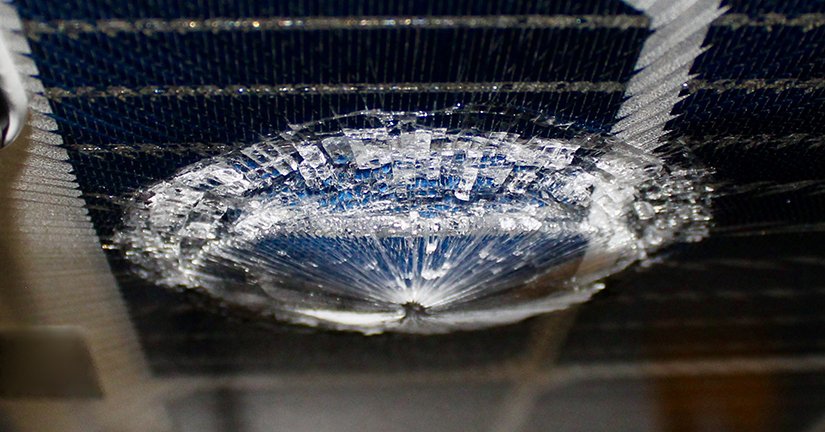Beyond-Qualification Tests and Risk Mitigation
Beyond-qualification testing is one of the solar industry’s most valuable for mitigating technology and project risks.
Whether you are deploying distributed solar projects in rooftop applications or large-scale ground-mounted projects in free-field applications, the best locations for solar are inherently high-stress environments subject to extreme daily and annual temperature variations, high humidity, dynamic mechanical loads, and long-term ultraviolet (UV) exposure.
Given the duration and intensity of these environmental stresses, project stakeholders need to evaluate locational and technical risks on a case-by-case basis. Environmental stresses vary according to location. Product performance differs based on exposure. With enhanced test data, these differences are not random but statistically predictable.
Beyond-qualification testing is one of the industry’s best tools for understanding these differences and adapting project designs in response to location- and product-specific characteristics. This article provides a conceptual framework for understanding the impetus behind beyond-qualification testing. Moreover, to illustrate the need for and importance of extended stress-testing regimes, we review some worst-case examples of project losses and perils to exemplify the project risks that beyond-qualification testing helps to mitigate.
Beyond certification testing in the laboratory accelerates PV module aging effects and helps to identify potential wearout mechanisms and failure modes.
IT SEEMED LIKE A GOOD IDEA AT THE TIME
In a long-form investigative article for E&T, a UK-based engineering and technology magazine, Ben Heubl explores potential risks associated with premature PV module backsheet failures, focusing on “one specific legacy issue involving so-called AAA polyamide-based (PA-based) PV module backsheet technology.” As reported, modules with PA-based backsheet materials were widely fielded in Europe between 2010 and 2012, a period during which module demand boomed in Germany and Italy.
Heubl writes: “AAA PA backsheets became popular because of their alluring price point. The motivation was to improve raw material supply as demand could no longer be met with polyvinyl fluoride (PVF). Cheaper polyamide backsheets allowed panel manufacturers to meet growing demand from Europe.”
By eliminating a bottleneck in the supply chain, the sudden availability of PA-based backsheet material solved a short-term problem. Unfortunately, this type of PA-based basksheet material also created longer-term asset management and operations and maintenance (O&M) problems that owners, O&M providers, and other project stakeholders are still dealing with today.
Few, if any, of the companies that supplied the materials that failed prematurely remain in business today.
Due to reports of premature wearout and failure, the PA-based backsheet materials of this era disappeared almost as quickly as they arrived on the scene. By 2014, suppliers had largely pulled this type of PA-based backsheet from the market. Few, if any, of the companies that supplied these materials remain in business today. Moreover, many of the module companies that incorporated these backsheets in their bills of material (BOMs) did not survive the rapid price declines that characterized the solar market.
While the backsheet and module companies themselves may have fallen by the wayside over the past decade, the fielded products remain. There is also ample anecdotal evidence that the problems associated with premature PA-based backsheet wearout—such as excessive performance degradation or increased module failure rates—remain an issue in Europe to this day. In the absence of a manufacturer or an insurance warranty, project stakeholders are left on their own to remedy these performance and reliability issues.
Ballistic impact test requirements for product certification use 1-inch (25-millimeter) freezer iceballs, which are inadequate to characterize severe hail risk in fielded assets.
ONE BAD APPLE SPOILS THE BUNCH
Since PV power systems are exposed to an extreme range of environmental stresses, reliable in-field operation over many decades is not a trivial matter. This is especially true given that climate change impacts are exacerbating the frequency and severity of extreme weather in locations all around the world.
According to renewable energy insurance providers and loss adjusters, such as GCube and Lloyd Warwick International, weather-related damages are the root cause of most solar insurance losses in North America. Most importantly, the claims value associated with extreme weather are oversized relative to event frequency. Lloyd Warwick estimates that storm and hail damage accounts for only 12% of solar project loss occurrences but 80% of insurance claim values.
In late May 2019, the 182 MW Midway Solar generating facility, located in West Texas, suffered one the costliest weather-related losses to date. Over a period of days, seasonal thunderstorms interspersed with golf ball- and baseball-sized hail menaced a region stretching from El Paso to Lubbock. According to San Angelo Live, one overnight hailstorm was the biggest to hit the area since 1995.
Losses associated with the resulting operational all risks policy claim were on the order of $70M to $80M.
The same line of storms that shattered car windows in San Angelo, Texas, battered the 1,500-acre Midway Solar farm. As reported in Insurance Insider, losses associated with the resulting operational all risks policy claim were on the order of $70M to $80M. In the wake of these catastrophic losses, insurance carriers not only increase rates, but also decreased exposure. As a result, large-scale project insurance went from being an afterthought to one of the buzziest topics in the industry.
Prior to 2018, industry stakeholders rarely discussed large-diameter hail risk. Today, hail and extreme weather risk are the subject of numerous industry roundtables, webinars, and white papers. This change in temperature reflects the fact that hail risk assessment and mitigation is central to insurance policy pricing. These recent large-diameter hail losses have also caused stakeholders to reassess the efficacy of industry-standard hail impact tests in terms of predicting long-term in-field reliability.
RETC’s Hail Durability Test (HDT) program uses enhanced stress test criteria that simulate larger hailstones and better characterize project risks associated with severe hail.
MOVING BEYOND MINIMUM STANDARDS
The goal of consensus-based codes and standards is to achieve an acceptable level of safety and reliability based on a continuum of risk. For example, Article 90 of the National Electrical Code (NEC), notes that: “The purpose of this Code is the practical safeguarding of persons and property from hazards arising from the use of electricity.” Moreover, Section 90.1(A) warns that only meeting these minimum safety standards is no guarantee of system adequacy or hazard-free operation over the long term.
The same basic concept applies to product safety and qualification test standards. All PV module and inverter models are subjected to a battery of minimum qualification tests required for certification and listing. These test standards are designed according to a committee-based process based on the best available information. The primary goal of product qualification testing is to achieve an acceptable level of short-term in-field safety.
While product qualification tests are generally useful for characterizing initial out-of-the-box reliability, they are not designed or intended to characterize long-term reliability. To characterize product reliability over a long-term time horizon, industry stakeholders increasingly rely on beyond-qualification tests. Testing to failure, for example, is an extreme form of beyond-qualification testing.
To identify areas of weakness, beyond-qualification test protocols subject modules to additional stress as compared to minimum safety certification or design qualification tests.
Rather than test all products to failure, industry stakeholders and committees have developed enhanced testing protocols specifically designed to identify long-term wearout mechanisms and failure modes. Examples of more stringent beyond-qualification test standards for PV modules include CSA Group’s C450 testing protocol, NREL’s Product Qualification Plus test, PVEL’s Product Qualification Program (PQP), and RETC’s Thresher Test.
To identify areas of weakness, these beyond-qualification test protocols subject modules to additional stress as compared to minimum safety certification or design qualification tests. While the specific test parameters may vary from one testing laboratory or enhanced test protocol to another, PV modules that have passed beyond-qualification tests are less likely to experience in-field failures and performance degradation as compared to products tested only to minimum qualification test standards.
Beyond-certification test sequences help identify potential solar module serial defects before products are deployed in the field.
LEVELING UP TO MITIGATE RISK
As the average expected lifespan for solar power plants increases over time—and deployments scale up in terms of both frequency and capacity—the reliable in-field operation of PV modules, inverters, and balance of system (BOS) components is increasingly important to the financial performance of individual assets as well as portfolios of projects. As compared to minimum safety and certification standards, beyond-qualification testing provides a better prediction of long-term in-field reliability.
Not surprisingly, the solar industry’s push for more stringent reliability testing standards began to pick up steam circa 2012. At that time, some PV modules that had passed industry-standard safety certification and design qualification tests were exhibiting signs of premature backsheet wearout, raising questions and concerns about long-term reliability, project financial performance, and even safety.
In the intervening years, the solar industry has dramatically reduced costs, scaled up, and done so without experiencing widespread failures. This is the value of beyond-qualification testing. As project stakeholders identify new wearout mechanisms and performance degradation modes, researchers and testing laboratories develop and implement new testing standards. This process of identification, investigation, and improvement has mitigated performance risks associated with potential-induced degradation (PID), light-induced degradation (LID), light- and elevated temperature-induced degradation (LeTID), and so on.
Today, module aperture areas are increasing even as PV glass and module frames are getting thinner.
Beyond-qualification tests are also useful for addressing environmental risks such as stresses associated with extreme wind and snow loads or large-diameter hail impacts. As an example, RETC has developed a Hail Durability Test (HDT) program designed to assess module hail tolerance. Today, module aperture areas are increasing even as PV glass and module frames are getting thinner. Moreover, increasing numbers of large-scale solar projects are being deployed in regions at elevated risk of extreme weather or severe hail risk. To meet investor expectations, these projects must avoid the fate of the Midway Solar farm, either by design or control strategy.
PV power systems have a financial life expectancy measured in decades. Module manufacturers back their products with a 25- or 30-year power warranty. Some financiers and insurance providers take an even longer view on solar assets—with an eye toward a 35-, 40-, or even 50-year design life. In this context and climate, beyond-certification testing is one of the industry’s essential tools for mitigating project and supply chain risk.
—A version of this article originally appeared on the Mayfield Renewables website in support of an Ask Mayfield Anything webinar featuring RETC.




